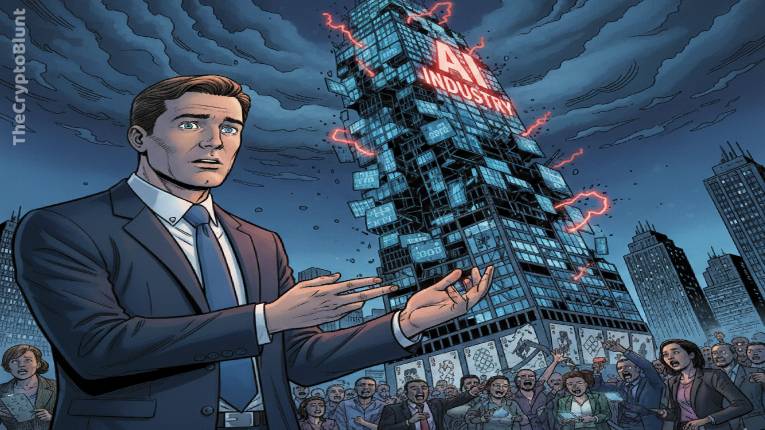The U.S. economy is being kept afloat by the current boom in AI spending. However, warnings from Deutsche Bank highlight mounting risks and a projected $800 billion revenue shortfall by 2030.
The AI gold rush may be keeping the U.S. economy afloat, but its current trajectory, according to Deutsche Bank, looks anything but sustainable.
A new research note from the German lender warns that AI capital expenditures have reached such extraordinary heights that the U.S. is single-handedly being prevented from tipping into recession.
Deutsche Bank isn’t the only one that has noticed the outsized impact that AI is having on the economy. The Kobeissi Letter posted a chart by Arch Global Economies showing that software and technology investment’s contribution to U.S. real GDP growth has surpassed 1 percentage point for the first time in history. It has also exceeded the previous peak reached during the dot-com bubble in 1998.
“This is unprecedented… The AI boom is driving economic growth.”
With spending outpacing actual productivity gains, storm clouds on the horizon are seen by Deutsche Bank.
Deutsche Bank Points to Capex-Driven Growth Over Software Output
The scale is truly staggering. According to estimates by Goldman Sachs, global AI-related capital expenditures reached $368 billion between early 2023 and August 2025. The majority of this funding was directed toward physical infrastructure, such as constructing data centers, upgrading power supply, and installing high-grade equipment.
Despite the extensive investment, the actual output from AI software and its promised leap in productivity and efficiency remain limited. In fact, it is noted by Deutsche Bank that if you remove tech-driven spending, real GDP growth in the U.S. has been hovering around 0% in both 2024 and 2025. This means that without data centers, the economy would already be in a recession.
According to Deutsche Bank, to keep contributing fresh points to GDP, the tech cycle would need to accelerate “parabolically” quarter after quarter. That kind of endless upward slope is mathematically improbable, if not impossible.
The current AI boom increasingly resembles a sprint: unsustainably fast, front-loaded with construction, and destined to slow once the infrastructure build-out plateaus. Since tech stocks have been responsible for approximately half of the S&P 500’s gains this year, the risks aren’t limited to GDP; they extend directly into financial markets.
The $800 Billion Gap
Further fuel is being added to the skeptics’ fire by the consultancy Bain & Co. Their estimate suggests that by 2030, $2 trillion will be needed by the AI sector annually to fund the demand for computing power. Yet, even when factoring in efficiency gains and cost savings, the world is still facing an $800 billion revenue shortfall.
That disparity raises an uncomfortable question: who will bear the cost? If the demand for AI compute doesn’t align with revenues, the industry could face a reckoning with overcapacity and squeezed margins, a situation eerily reminiscent of the dot-com era.
A more measured outlook does exist, however. Goldman Sachs believes that AI productivity gains will eventually materialize, boosting U.S. GDP by about 0.4 percentage points per year in the near term and roughly 1.5% in the long run. While not “parabolic,” this could provide a softer landing than a dramatic AI bust.
The “balanced” interpretation, according to Deutsche Bank, is that productivity improvements are indeed on the horizon, but not yet at a rate that justifies the runaway spending seen today. In other words, the economy may well be transformed by AI, but the timelines don’t align with the feverish building spree currently underway.
For now, construction workers are kept busy, power utilities are kept investing, and equity markets are kept buoyant by AI capital expenditures. However, the longer-term question remains: is this foundation durable, or does the world risk constructing a multi-trillion-dollar house of cards?















